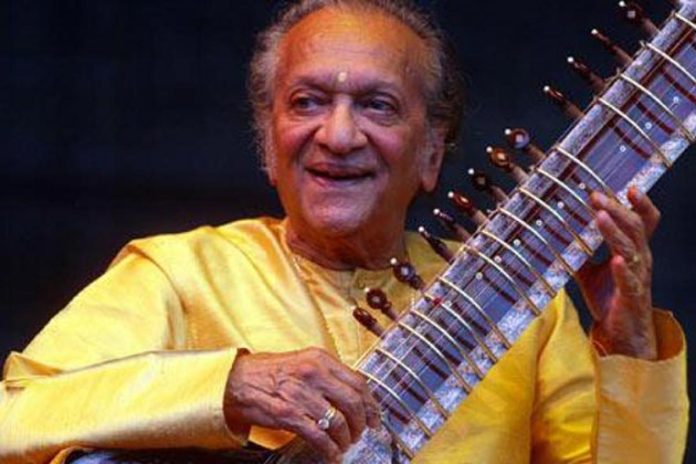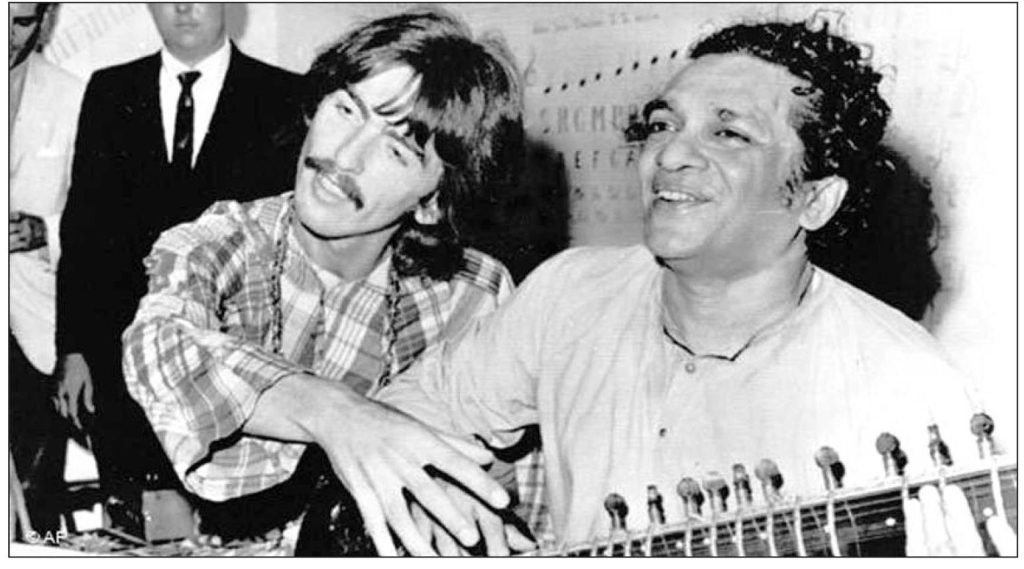
Pandit Ravi Shankar- The Godfather of Indian Music
Date:

Share post:
Whenever we speak of musical maestros across the world, one name that echoes in the heart of billions of music lovers is that of Pandit Ravi Shankar. One would not be wrong to call him the Tansen of the 20th Century. Or, how about Beethoven? Actually, his talent is so uniquely supreme that it’d be a sin to compare Panditji to anyone.

Pandit Ravi Shankar is the godfather of the Indian classical music; popular for introducing the western culture to the melodies of Sitar, a coveted classical Indian instrument. As a fan, I can only compare my experience of listening to his ragas as meditation. His music knew no boundaries. He was a first to intersect a path between western and classical music. His achievements are far beyond winning The Bharat Ratna, Six Grammy awards, Oscar nominations, 14 honorary degrees, and other recognitions in his lifetime. In fact, he is a first to put India on the World map of music, that too on the power of our rich Indian Classical music. Throughout his life, he spread the beauty and the depth of our Indian culture through music.
The mysticism of Indian culture that is so deeply reflected in his music could have its roots stemmed from his birthplace Varanasi- a city that seems older than time itself. Until 10, Ravi grew up in the old lanes of Varanasi, getting nurtured by its music, culture, and the spiritual rhythm of life. He later joined his elder brother, Uday’s dance troupe- Compagnie de Danse Musique Hindus (Company of Hindu Dance Music), through which he was introduced to western music. He later exclaimed in an interview that,
“I keenly listened to our music and observed the reaction of audiences on hearing it. This critical analysis helped me to decide what we should give to Western audiences to make them really respect and appreciate Indian music.”
Ravi spent a large part of his adolescences attending various Parisian schools. This experience shaped his musical perspective that later became pivotal in commanding the respect he desired for Indian music. Much of Ravi Shankar’s mastery in playing the Sitar can be attributed to his mentor Allaudin Khan, whom he met during one of his musical conference in 1934. A year after training under Allaudin, whom he fondly called as baba, he began giving recitals in public. Allaudin remained his musical mentor and guide for many years. His influence was not only evident in Shankar’s music, but also in his way of looking at life.
As claimed by Ravi,
“Baba himself was a deeply spiritual person. Despite being a devout Muslim, he could be moved by any spiritual path. One morning, in Brussels, I brought him to a cathedral where the choir was singing. The moment we entered I could see he was in a strange mood. The cathedral had a huge statue of the Virgin Mary. Baba went towards that statue and started howling like a child: ‘Ma, Ma’ (mother, mother), with tears flowing freely. We had to drag him out. Learning under Baba was a double whammy—the whole tradition behind him, plus his own religious experience.”
After a decade of training with Allaudin, Ravi moved to Mumbai and worked at the Indian People’s Theatre Association, composing music for ballets until 1946. When he quit the association in 1956, he was holding the position of the music director of the New Delhi radio station- All-India Radio. During his tenure, he composed many orchestra symphonies mixing Indian instruments like Sitar with western music. He also started performing and writing music with the American-born violinist Yehudi Menuhin, with whom he would later record three albums: the Grammy Award-winning West Meets East (1967), West Meets East, Vol. 2 (1968) and Improvisations: West Meets East (1976).
Ravi Shankar’s music was increasingly gaining the attention of the world. In 1954, he was invited by the Soviet Union to give a recital. Two years later, he performed in the USA and Western Europe. His contribution to Indian cinema is as applause-worthy as his International accolades. Indian cinema first took him seriously as a mainstream musician after he gave the score to the famous Indian film director Satyajit Ray’s “The Apu Trilogy”. Pather Panchali, the first part of the trilogy won the Grand Prix—now known as the Golden Palm or Palme d’Or—at the Cannes Film Festival in 1955, that is awarded to the best film of the festival. Ravi Shankar fully embraced the role and responsibility of representing Indian music globally in the 1960s. The iconic decade saw him performing at the Monterey Pop Festival, as well as his set at Woodstock in 1969. In 1966, George Harrison, the lead guitarist of The Beatles started studying Sitar under Ravi Shankar and even played the instrument in the Beatles’ track “Norwegian Wood.”

Ravi Shankar is probably the first in realizing the power of music to invoke charity from the public. In 1971, the situation in Bangladesh was volatile due to increasing conflict between Indian and Pakistani Muslim forces. Worsening it was massive floods. Seeing the plight of people dealing with deadly famine conditions, Shankar and Harrison organized a concert for Bangladesh at Madison Square Garden on August 1. The legends- Bob Dylan, Eric Clapton, Shankar and Harrison performed, and the proceeds of the concert were given to UNICEF for reviving Bangladesh. This show, a brainchild of Ravi Shankar, is considered to be the first major modern charity concert. What’s more iconic about this concert is that the recording made for the benefit by the performing artists won the 1973 Grammy Award for album of the year.
Ravi Shankar’s success grew leaps and bounds even in the 21st century. In 1982, the score he gave to Richard Attenborough’s film Gandhi earned him an Oscar nomination. Ravi Shankar also gave rise to the New Age Movement when he experimented with adding electronic music to his traditional sound in 1987. Throughout his career, he continued to compose orchestra symphonies using a mix of traditional Indian, and western instruments, which includes a collaboration with Philip Glass: the 1990 album Passages. His contribution also earned him the prestigious membership of the American Academy of Arts and Letters.
No legend’s success story is ever complete without a pinch of criticism. Ravi Shankar’s story is no different. He received heavy condemnation for not being a traditionally pure musician, to which he responded saying,
“I have experimented with non-Indian instruments, even electronic gadgets. But all my experiences were based on Indian ragas. When people discuss tradition, they don’t know what they are talking about. Over centuries, classical music has undergone addition, beautification, and improvement—always sticking to its traditional basis. Today, the difference is that the changes are faster.”
Pandit Ravi Shankar died on 11 December 2012, in San Diego, California. However, has he really died? His legacy is taken forward by his two supremely talented musician daughters, Anoushka Shankar who is a Sitar player like her father, and Grammy Award-winning singer-songwriter Norah Jones.
a musician never dies; even after death takes him apart. He is born each day in the heart of each person who rejoices when he listens to his music. The musician is celebrated every time someone hums along to his tune, attempting to steal a few precious moments of his life for himself.
